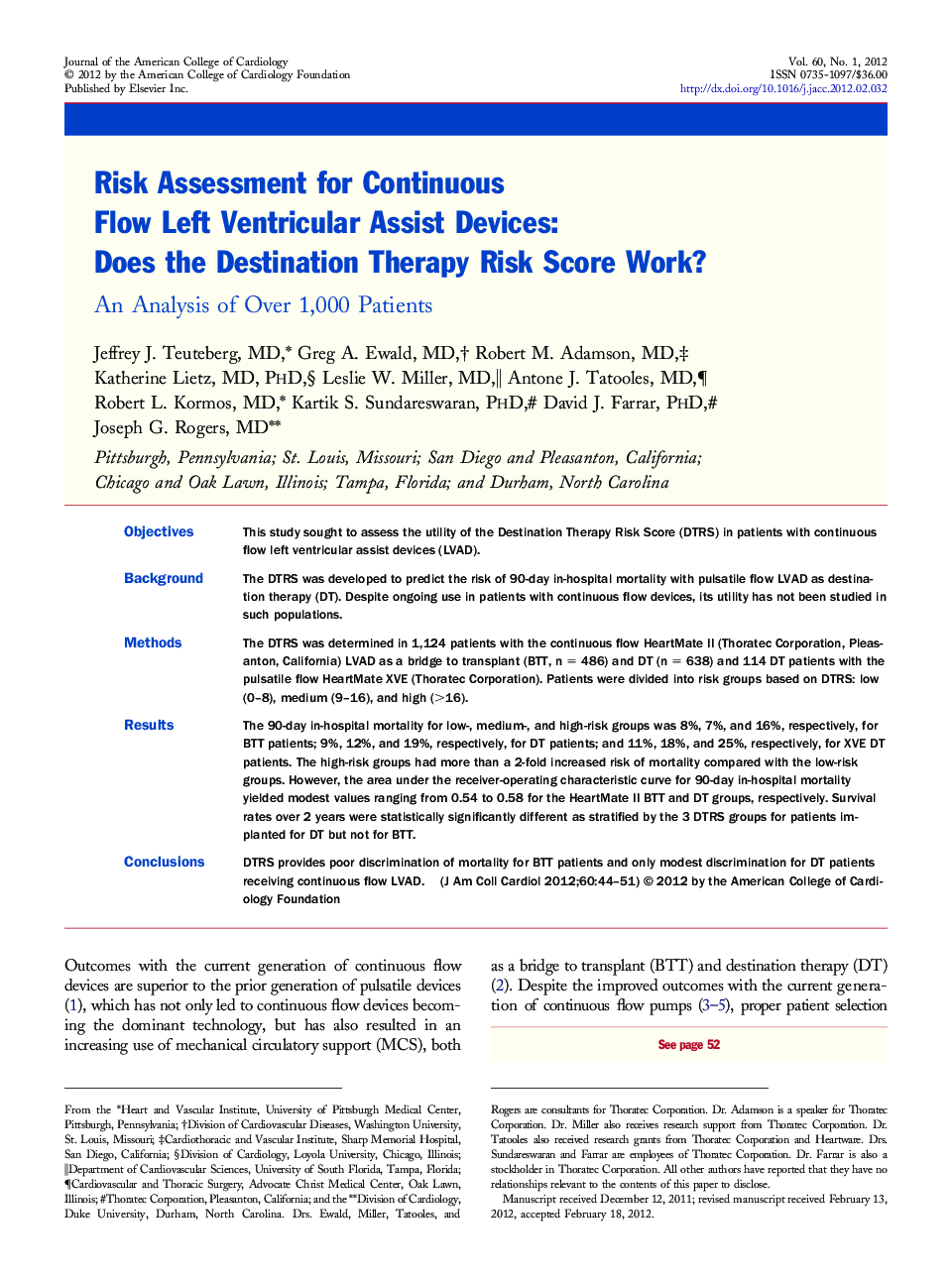| Article ID | Journal | Published Year | Pages | File Type |
|---|---|---|---|---|
| 2948508 | Journal of the American College of Cardiology | 2012 | 8 Pages |
ObjectivesThis study sought to assess the utility of the Destination Therapy Risk Score (DTRS) in patients with continuous flow left ventricular assist devices (LVAD).BackgroundThe DTRS was developed to predict the risk of 90-day in-hospital mortality with pulsatile flow LVAD as destination therapy (DT). Despite ongoing use in patients with continuous flow devices, its utility has not been studied in such populations.MethodsThe DTRS was determined in 1,124 patients with the continuous flow HeartMate II (Thoratec Corporation, Pleasanton, California) LVAD as a bridge to transplant (BTT, n = 486) and DT (n = 638) and 114 DT patients with the pulsatile flow HeartMate XVE (Thoratec Corporation). Patients were divided into risk groups based on DTRS: low (0–8), medium (9–16), and high (>16).ResultsThe 90-day in-hospital mortality for low-, medium-, and high-risk groups was 8%, 7%, and 16%, respectively, for BTT patients; 9%, 12%, and 19%, respectively, for DT patients; and 11%, 18%, and 25%, respectively, for XVE DT patients. The high-risk groups had more than a 2-fold increased risk of mortality compared with the low-risk groups. However, the area under the receiver-operating characteristic curve for 90-day in-hospital mortality yielded modest values ranging from 0.54 to 0.58 for the HeartMate II BTT and DT groups, respectively. Survival rates over 2 years were statistically significantly different as stratified by the 3 DTRS groups for patients implanted for DT but not for BTT.ConclusionsDTRS provides poor discrimination of mortality for BTT patients and only modest discrimination for DT patients receiving continuous flow LVAD.
